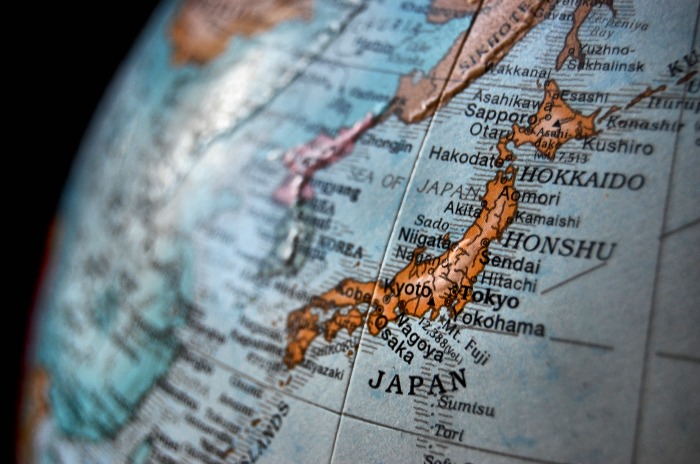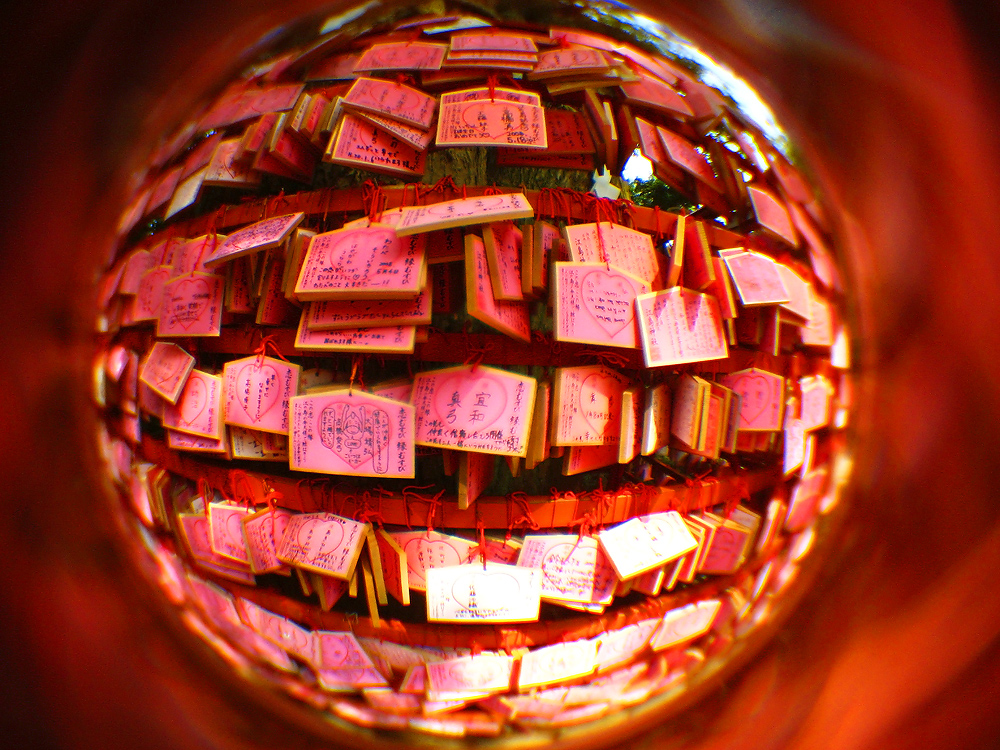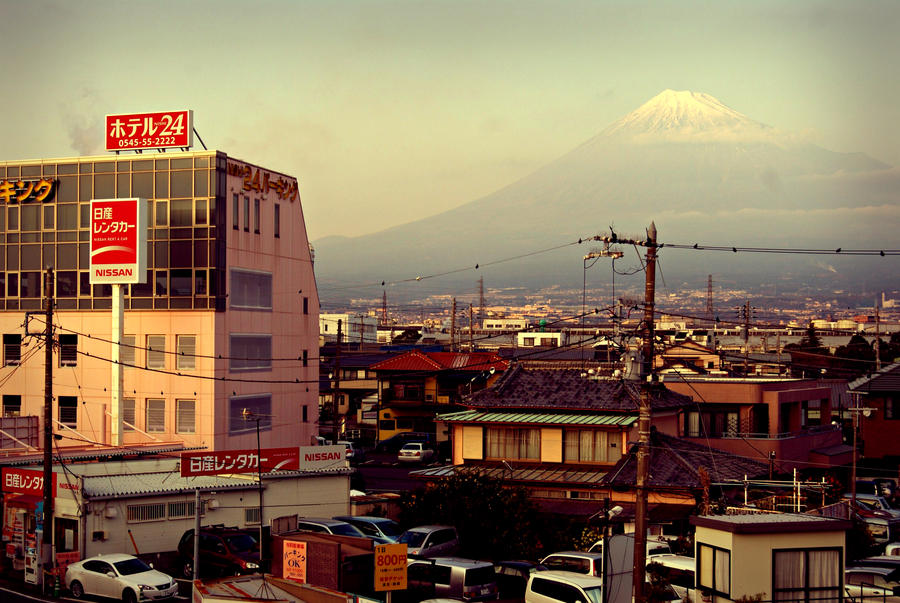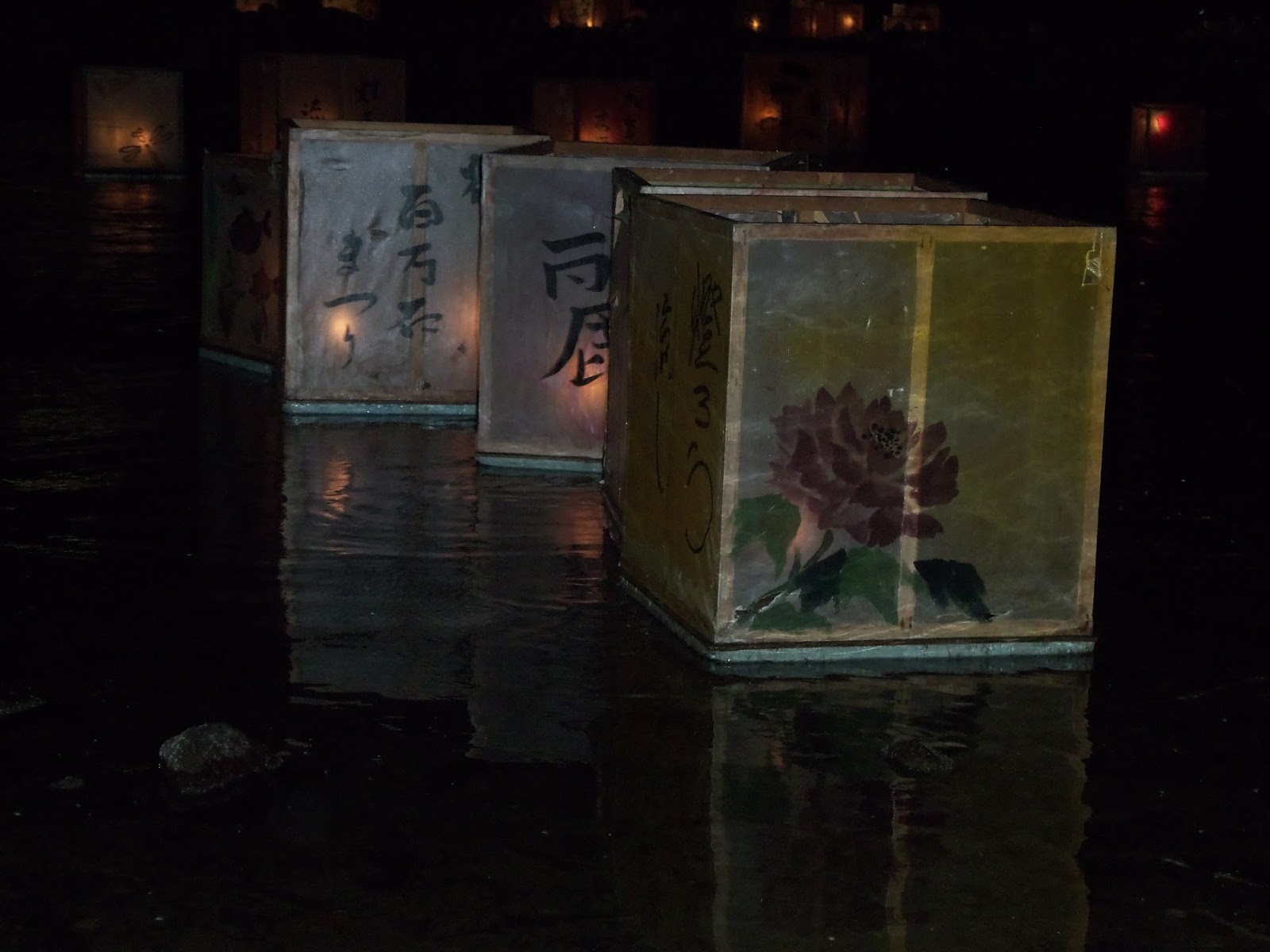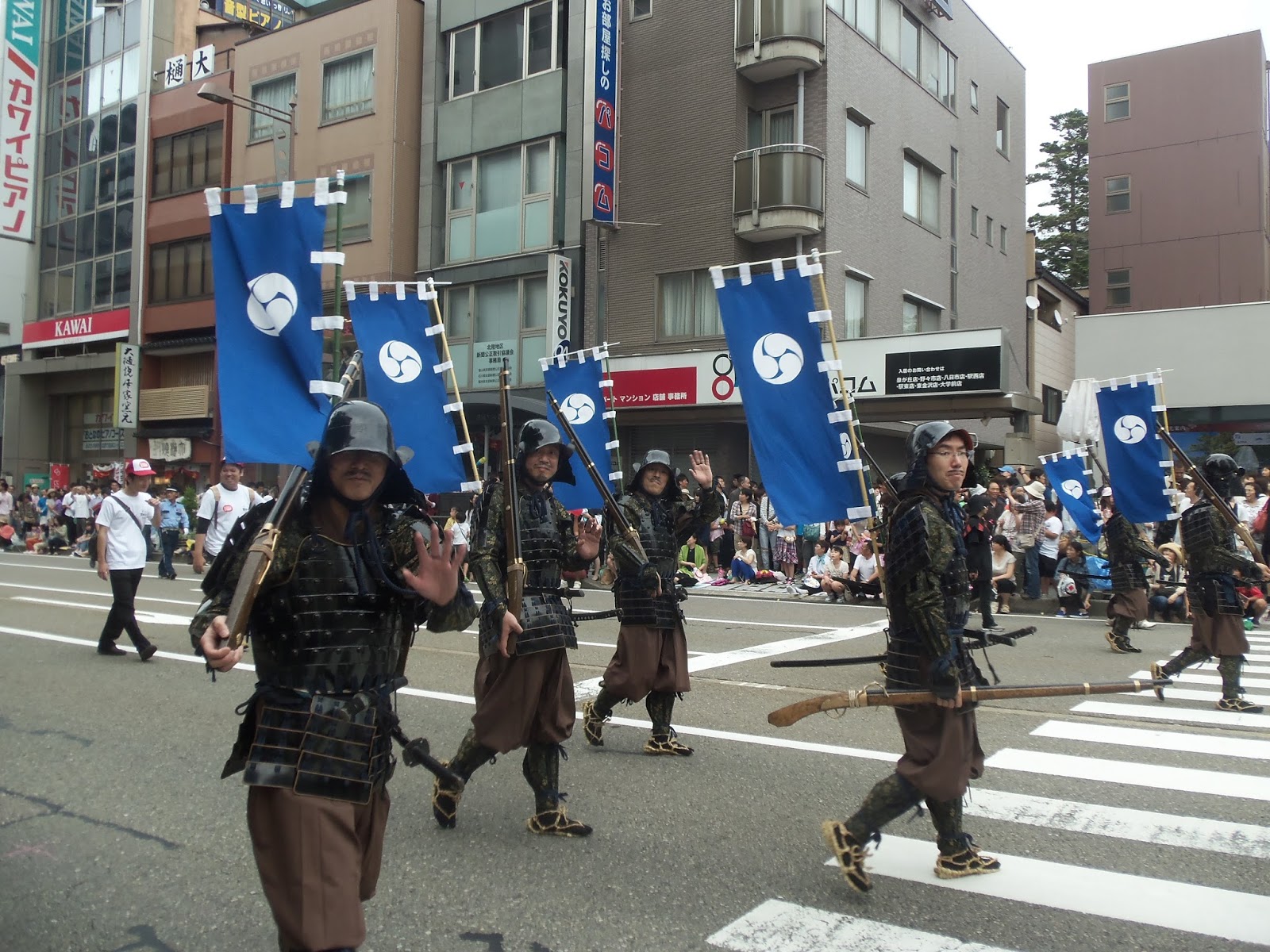This weekend I
had a little trip down to Nagoya. Well, I say “went”, but that’s a wee bit of
an exaggeration: I arrived Friday evening and left 4pm the following day. But
if all you want to see is Nagoya-only things and/or have no interest in the car
industry (Toyota, Honda and Mitsubishi, Nagoya is home to all three of those),
then that’s just perfect.
Right after arriving my host along with his girlfriend
took me to an izakaya which was supposed to be well-known for it’s Nagoya food.
And as I often do, because I never
remember that I live in 2014, I only remembered to take pictures of all this
food once it was in my tummy. I only managed to take a picture of tenmusu (天むす), that is a small prawn tempura stuck into an
onigiri (nori-wrapped rice). I left the nori out, since I don’t like it, but if
they had tenmusu in Kanazawa readily
available, I’d happily convert to having onigiri for lunch. Seems like a
little, but it was tasty and you can get full on it pretty quick.
Aside
from that, Nagoya is famous mainly for the so called miso-katsu (味噌カツ), a fried pork cutlet with a rich, red miso sauce
(though other meats are available as well), and fried chicken wings, tebasaki (手羽先). I cannot even begin to tell you how gutted I was
when I discovered that those chicken wings, which I absolutely adore, are an
evening-only thing, because it’s customary to have them as a side with beer. I
also must say that while Japanese food is not usually something I go for, I’d
be quite content in Nagoya since there’re plenty of interesting meats, and not
just noodles and fish, readily available and yummy. I think I might go back to
Nagoya before coming back home, for some shopping and those tebasaki…
 |
| Tenmusu is indifferent to its fate. |
 |
| Tebasaki. http://mycolorm.exblog.jp/3234916 |
 |
| Miso-katsu, here a chicken one with mayo on top. I know it sounds weird, but I promise it was great! |
Sightseeing took
me all Saturday, from morning up until my departure. It may sound a tad weird,
but you really can see all there is to see in that time, unless you’re
interested in some car-related places or expensive museums (I wanted to go to
the Tokugawa Art Museum, but they charge Y1200/£7 just for entry, which is a
bit too much for me). What’s more, pretty much all of those places are within
walking distance of each other, if you only have time and want to stroll
instead of taking the underground. Technically, you can do that in tons of
places, but when you think that Nagoya is the third largest incorporated city
in Japan and also the fourth largest in terms of population, the whole matter
gets a little more perspective.
I started with
the Shinto shrine, Atsuta Jingū (熱田神宮), which is good 1900 years old now (!), and which
is most famous for keeping the sacred sword, Kusanagi no Tsurugi (草薙神剣), one of the three Imperial regalia. Sadly, the ‘unworthy’
are not allowed to see the sword, so I can’t tell you what it looks like. But,
as it often happens, I stumbled upon a Shinto wedding ceremony (a few more of
those and I’ll be able to puzzle up the whole thing!); it was also the first
time I was sightseeing with a Japanese person, my host, so I got to know a
little bit more than I usually would. Most of the times the names of all those
deities and what do they protect is too complicated for me, maybe if I had some
interest in this kind of stuff I’d know more, but as it is I’m simply happy
that there is a deity in any given shrine. And so that day I stumbled upon a
small shrine dedicated to a deity that keeps travellers safe (and, since it
seemed adequate, asked for some protection for my next trip) as well as a tree
deity (fittingly, enshrined in a tree). On top of seeing the main shrine and
the second, smaller, kind of a shrine within a shrine, Kamichikama-jinja, that
is. Also, for the first time, I’ve done what plenty of Japanese people do when
visiting shrines: I bought an omikuji
(おみくじ), a fortune. If
I am to believe what it says, then I have a small blessing (小吉, shō-kichi) in store for me, and specifically: I
have good things coming, but I need to wait, and if I’ll be too merry, then bad
things may happen, so I should be careful. I tend to take these things with a
grain of salt, but actually, a small blessing seems just right for me – it fits
my life motto of finding happiness in little things.
 |
| Tree deity. |
 |
| Main shrine. |
 |
| Fortunes and amulets. |
 |
| My fortune. |
From Atsuta
Jingū I went to the next place, a Buddhist temple called Osu Kannon (大須観音). It’s kind of hard to miss, it really stand out
with this kind of red. Apparently every now and then there’s a flea market
taking place there, but sadly, not when I arrived. Since the god at Osu Kannon
looks over relationships, most people there pray to find love or get married. I
know, it’s a Buddhist temple and I’m on about gods instead of Buddha – but in
Japan they sort of got their religions mixed, and since the Japanese are more
superstitious than religious, even they don’t always understand how it all
works, they only know where to pray for what and where to celebrate which of
life’s important events. That’s the easiest way I can explain it without going
into details which even I don’t think I have straight, so I’d rather not
confuse you any more.
From Osu Kannon
I went into the nearby market street, one which was market by one of the most
awesome graffiti I have ever seen. It was basically a street full of shops like
you’d see pretty much everywhere: some knick-knacks here, a coffee shop there,
a few more interesting bits… The main reason I went there was because there was
a shop with used Lolita clothing that I wanted to visit, but I’ll talk about
Lolita some other time.
 |
| Entrance to the shopping street. |
At the end of
this trip I went to the most obvious place: the Nagoya Castle (名古屋城, Nagoya-jō). Shame that a big chunk of it was under
construction, so it either ruined otherwise pretty pictures or meant no access
to certain places, but castles in Japan are a bit like temples and shrines:
they mostly look the same except for a few architectural details. Fortunately,
to make the visit a bit more interesting, there was some sort of re-enactment going
on, starring three samurai: Maeda Keiji (前田慶次); Maeda Toshiie (前田利家), feudal lord of what is now Kanazawa; and Tokugawa
Ieyasu (徳川家康), the founder
of shogunate in Japan, which began an over 200 years long period in Japanese
history called the Tokugawa period. Why those three? Very simply speaking, both
Maedas were in one way or another Tokugawa’s enemies and were fighting against
him. And why have such a re-enactment in Nagoya? Firstly, because Tokugawa
Ieyasu was from Aichi-ken, of which Nagoya is the capital city, so the castle
belonged to him, and secondly – because of the Battle of Sekigahara (1600),
which was a decisive one in clearing Ieyasu’s path to becoming Japan’s shogun.
Although now it’s in Gifu-ken, there’s only about 30 miles from Nagoya to
Sekigahara. And that’s it for the history. While looking at the photos below,
and especially the video, do bear in mind that the day wasn’t just sunny, it
was hot: good 30°C, no clouds and no breeze, while those gentlemen are waving
their weapons about and the audience is sweating, fanning themselves and
complaining that it’s hot. ;)
 |
| From left: Maeda Toshiie (green and grey), Tokugawa Ieyasu (white and dark blue) i Maeda Keiji (black and red). |
 |
| Gold-decorated rooms. |
